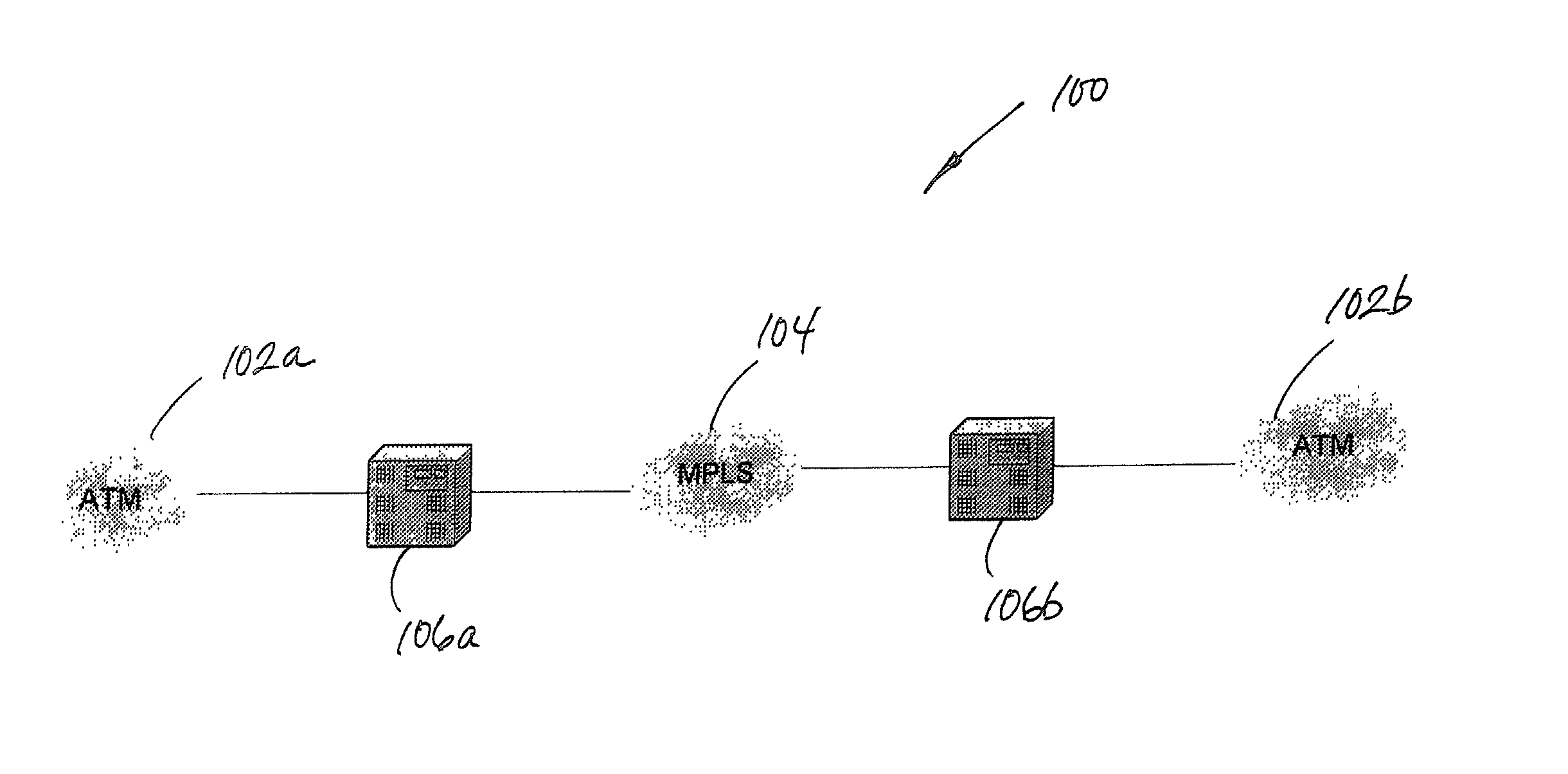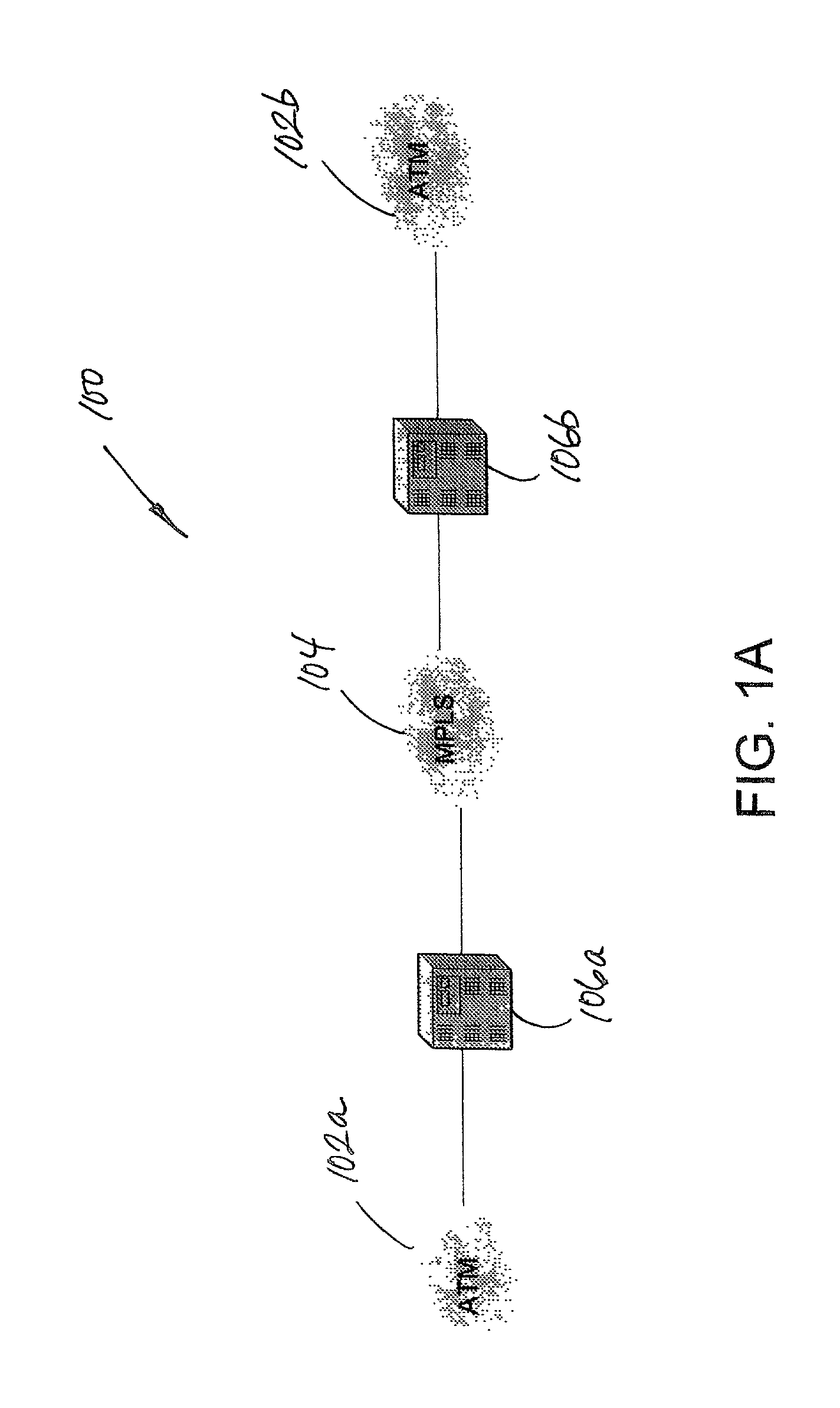Method and system for mediating traffic between an asynchronous transfer mode (ATM) network and an adjacent network
a technology of asynchronous transfer mode and asynchronous transfer mode, applied in the direction of data switching network, data switching by path configuration, digital transmission, etc., can solve the problem that the switch may become a traffic congestion point, the use of back-pressing signals only for traffic management has provided only limited improvement, and the one-to-one mapping scheme quickly becomes unworkable. problem, to achieve the effect of low delay and low latency
- Summary
- Abstract
- Description
- Claims
- Application Information
AI Technical Summary
Benefits of technology
Problems solved by technology
Method used
Image
Examples
Embodiment Construction
[0085] As shown in FIG. 8A, an example of a congestion scenario is now provided to illustrate operation of the system 700 where the system 700 allocates port bandwidth between the different types of egress queues 704, 706, 708 described above. In the scenario summarized in Table D, below, a total port bandwidth of 10 Kbps is considered, although this value is illustrative only and not considered to be limiting. It will be appreciated that the bandwidth will be limited only by the limitations of the particular hardware embodiment used to practice the present invention.
[0086] In this example, the unreserved queues 704 have been given a minimum guaranteed bandwidth of 3 Kbps.
4TABLE D Reserved queue Unreserved queue Service COS (5 Kbps guaranteed (3 Kbps guaranteed COS Category Weight bandwidth) bandwidth) 1 CBR n / a 2K n / a 2 nrtVBR 6 3K 3K .times. {fraction (6 / 8)} = 2.25K 3 UBR 2 2K 3K .times. {fraction (2 / 8)} = 0.75K 4 to 8 UBR 0 0 0 .SIGMA. all 8 7K 3K COS
[0087] In the example shown i...
PUM
 Login to View More
Login to View More Abstract
Description
Claims
Application Information
 Login to View More
Login to View More - R&D
- Intellectual Property
- Life Sciences
- Materials
- Tech Scout
- Unparalleled Data Quality
- Higher Quality Content
- 60% Fewer Hallucinations
Browse by: Latest US Patents, China's latest patents, Technical Efficacy Thesaurus, Application Domain, Technology Topic, Popular Technical Reports.
© 2025 PatSnap. All rights reserved.Legal|Privacy policy|Modern Slavery Act Transparency Statement|Sitemap|About US| Contact US: help@patsnap.com



